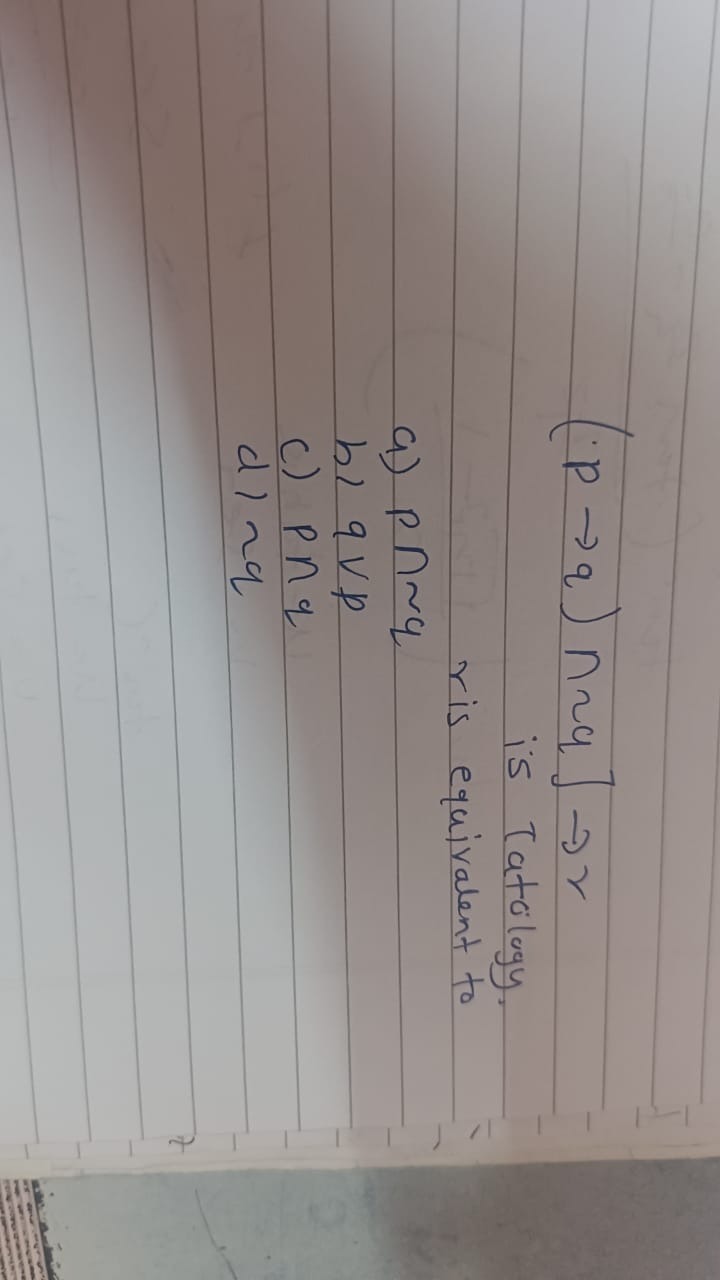Question
Question: $(p \rightarrow q) \land \neg q ] \rightarrow p$ is Totology, is equivalent to...
(p→q)∧¬q]→p is Totology, is equivalent to

A
p∧¬q
B
q∨p
C
p∧q
D
p∧q
Answer
q∨p
Explanation
Solution
Solution:
-
Rewrite p→q as ¬p∨q.
(¬p∨q)∧¬q.
Thus, the antecedent becomes: -
Apply distribution:
(¬p∨q)∧¬q=(¬p∧¬q)∨(q∧¬q).Since q∧¬q is always false, we have:
(¬p∨q)∧¬q=¬p∧¬q. -
Now, the original expression is:
(¬p∧¬q)→p.An implication A→B is equivalent to ¬A∨B, so:
¬(¬p∧¬q)∨p. -
Using De Morgan's law:
¬(¬p∧¬q)=p∨q.Therefore, the expression simplifies to:
(p∨q)∨p=p∨q.
Thus, the given formula is equivalent to p∨q, which is the same as q∨p.
